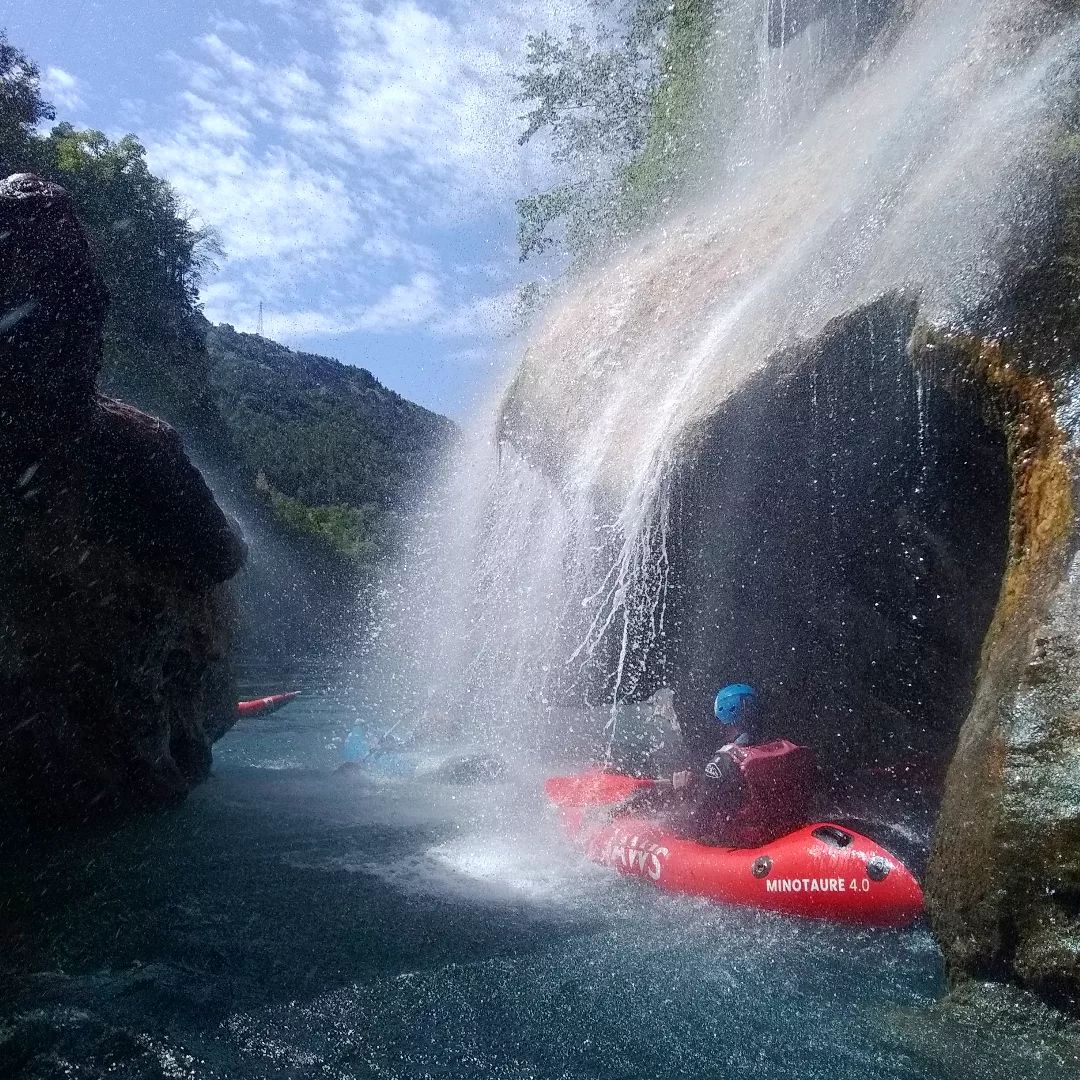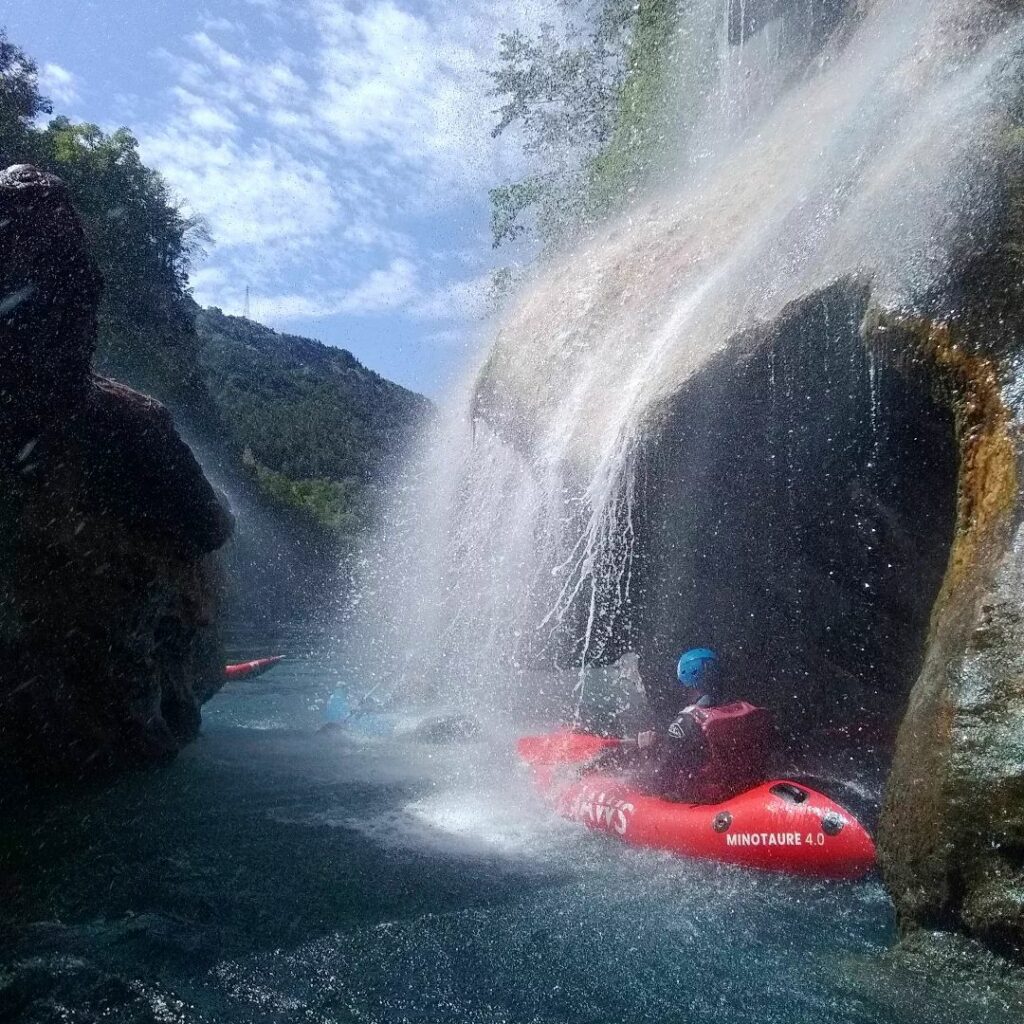
What is PACKRAFT?
The packraft, an inflatable kayak ultra light, stands out for its ability to be folded and stored in a backpack, making it the ideal equipment for adventurers looking to explore rivers or lakes during expeditions.
Thanks to its practical design, this kayak can be easily transported on foot or by bike, providing easy access to hard-to-reach areas. Its compact shape and efficient volume distribution allow you to load bivouac equipment, as well as your own bike.
the packraft stands out as the perfect choice for those who wish to undertake expeditions, transport bivouac equipment, take on challenges in the great outdoors, while remaining independent in accessing the boarding point.
Discover our packraft expedition trips on the Ubaye and Durance, accessible to beginners and experts alike.
Packraft
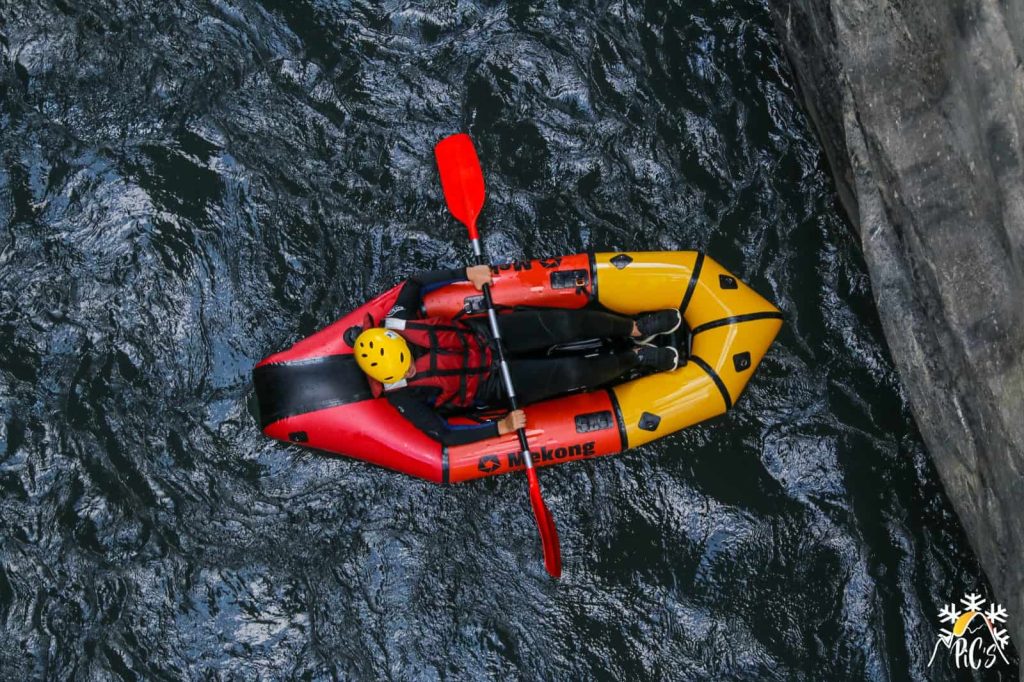
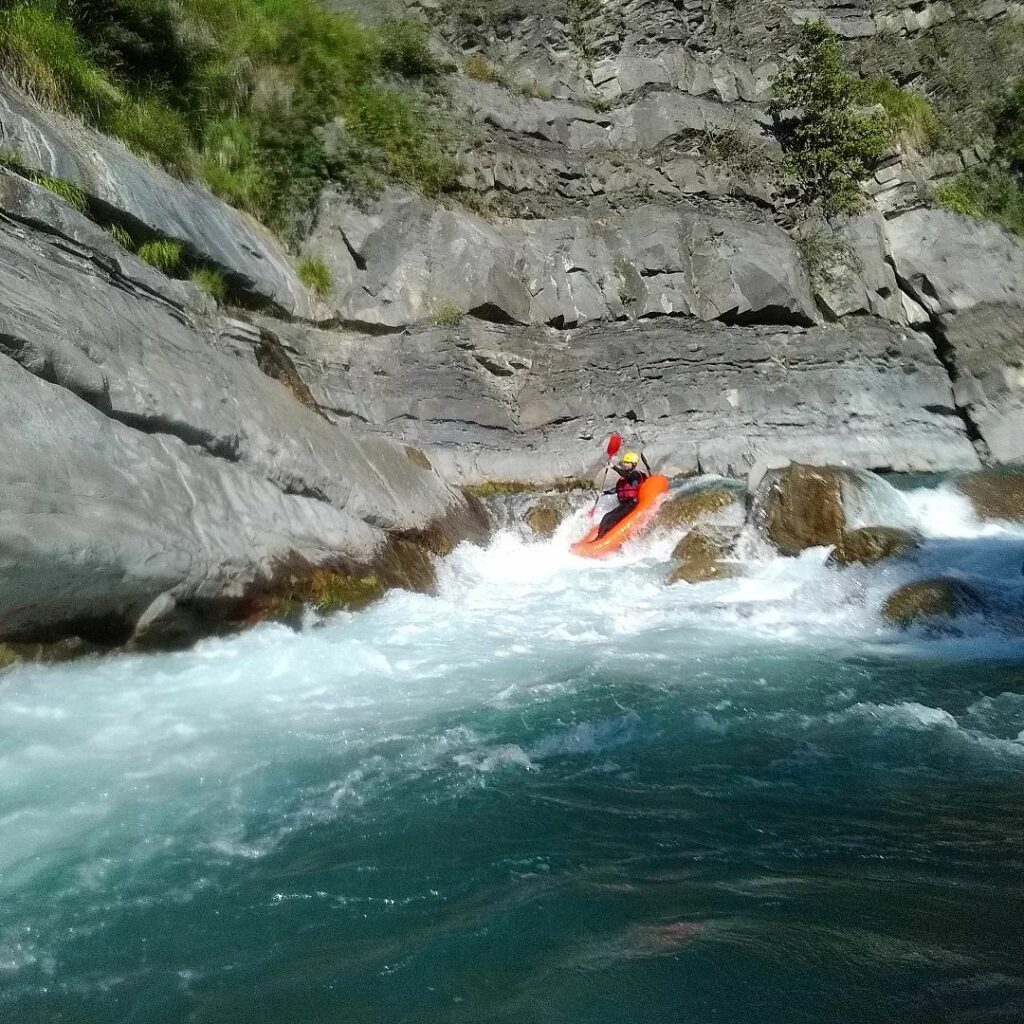
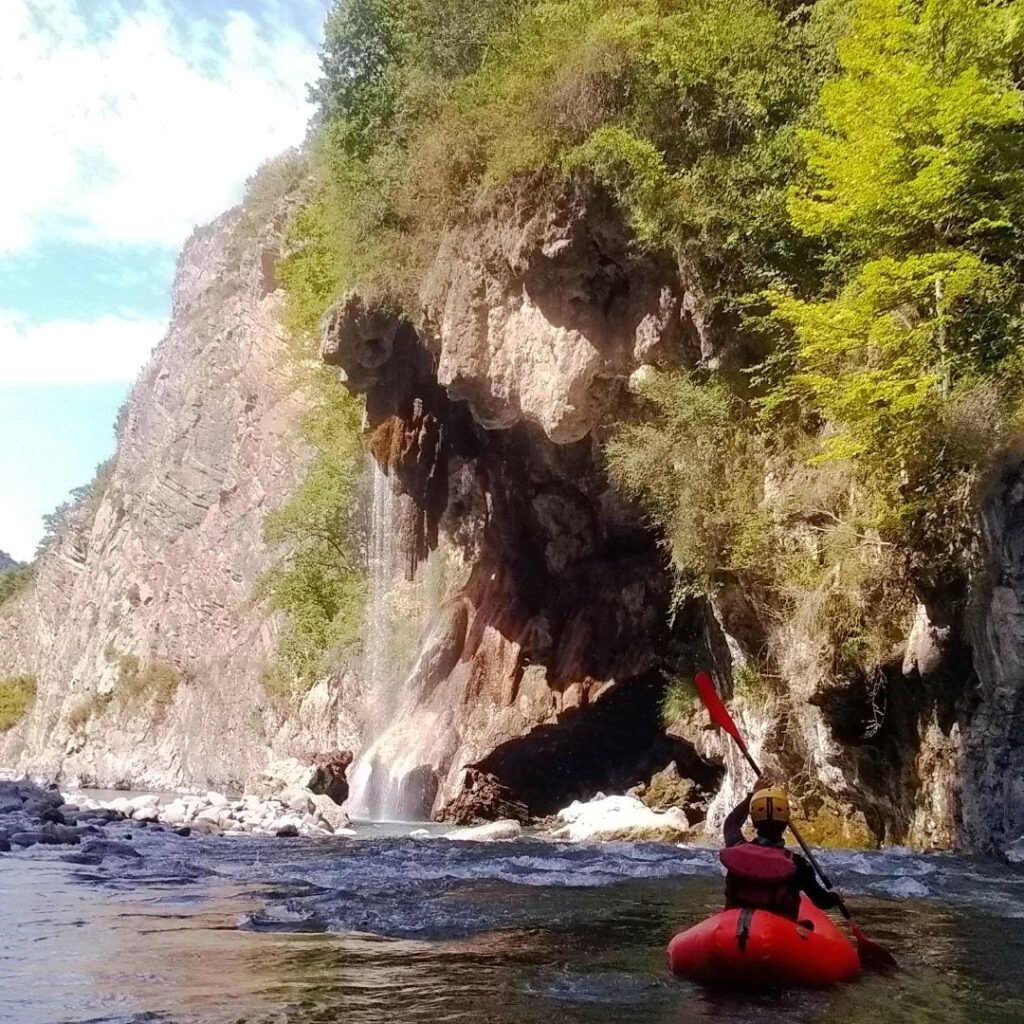
How does packrafting work?
- Materials and Construction: Packrafts are generally made from lightweight and durable materials such as reinforced PVC, hypalon or for quality packrafts TPU. They are designed to be compact, lightweight and easy to transport.
- Inflation: To use a packraft, you must first inflate it. This can be done using a manual pump or, in some cases, using a built-in pump or hydrant. The valves are designed to prevent air from escaping once the packraft is inflated.
- Seats and Accessories: Packrafts can be equipped with removable inflatable seats for paddler comfort.
- Use : Once inflated, the packraft can be used on a variety of bodies of water, such as rivers, lakes, or even at sea. Users typically paddle with paddles specifically designed for lightweight watercraft.
- Deflation and Storage: After use, the packraft can be deflated for easier transport. Once deflated, the packraft can be folded and stored in a compact bag.
Why sail in a packraft?
The packraft is appreciated for its versatility, ease of transport and its use in varied aquatic environments. However, it is important to follow the usage and safety instructions provided by the manufacturer to ensure a safe and enjoyable experience.
Sailing a packraft offers several advantages, which explains its growing popularity among outdoor enthusiasts. Here are some reasons why people choose this new water activity:
- Versatility: Designed to be versatile and can be used on a variety of bodies of water, such as rivers, lakes, canals, or even at sea. This gives outdoor enthusiasts great flexibility in choosing their destinations.
- Lightness and Portability: Packrafts are generally lightweight and easy to transport. They can be folded and stored in a compact backpack, making them ideal for those who like to explore remote locations often inaccessible by traditional boat.
- Accessibility: Packrafts are accessible to beginners. They do not require advanced nautical skills, but it is mandatory to contact a professional instructor from crazy water or canoe kayak instructor to learn navigation techniques.
- Adventure : Sailing in a packraft offers an immersive nature experience. It's a unique way to explore aquatic environments while enjoying the scenery and connecting with flora and fauna.
- Multiple outdoor activities: Pack rafts are not limited to navigation. They can be used for activities such as fishing, bivouac access, etc. This makes it a versatile piece of equipment for outdoor enthusiasts.
- Solo or group adventure: Pack rafts are available in different sizes, allowing individuals to go solo with equipment or in a group.
- Exploration off the beaten track: Thanks to their portability, they allow adventurers to explore remote locations, including areas with little land access.
What equipment is needed for packrafting?
Practicing packrafting requires specific equipment to guarantee the safety, comfort and success of your adventure.
- Packrafting: Obviously you will need a packraft. Make sure it is in good condition and appropriate for the conditions you will face.
- Paddle: Choose a paddle suitable for navigation. Lightweight, removable paddles are often preferred for ease of transport.
- Safety jacket : A life jacket is essential to ensure your safety on the water. Make sure it fits properly and meets safety standards.
- Helmet : Particularly if you plan to navigate rivers with rapids, a helmet is crucial to protect your head in case you hit rocks or other obstacles.
- Security equipment : This may include a safety rope, safety knife, first aid kit and other essential items depending on the boating conditions.
- Clothing suitable for water: Wear clothes that dry quickly and offer some protection against cold water. The neoprene suit is strongly recommended or the dry suit.
- Water shoes: Water shoes provide traction on slippery rocks and protect your feet.
- Waterproof bag or waterproof backpack: Protect your personal belongings by placing them in waterproof bags.
- Navigation system : Use a compass, GPS, or other means of navigation to avoid getting lost, especially if exploring remote areas.
- Bivouac equipment (if necessary): If you plan to go camping during your trip, make sure you have a lightweight tent, sleeping bag, lightweight cooking items, etc.
- Portable stove (if necessary): If you need to cook or boil water while traveling, a portable stove can be useful.
Before you go, be sure to check the weather conditions, share your itinerary with someone, and follow local rules and safety recommendations. Also contact local professionals.
Where to put your equipment in a packraft?
When you sail in packraft, how you organize and distribute your equipment is important to maintain the balance of the boat, ensure your safety and maximize comfort.
- Storage Compartments: Most boats have specific storage compartments where you can place your gear. Make sure you distribute the weight evenly to maintain good stability.
- Front Waterproof Bag: The packraft has storage space at the front, this can be a good place to store a dry bag containing light and bulky items such as a change of clothes, a first aid kit or camping items.
- Waterproof Bag at the Back: The boat has a storage compartment at the rear, this can be used for heavier items or items that you will not need to access frequently.
- Deck Straps: Many pack rafts have deck straps on the top that can be used to secure lightweight items such as jackets, hats, or other items you want to keep close at hand.
- Weight Balance: Distribute weight evenly across the boat to prevent it from becoming unbalanced. Avoid overloading one side, which could make navigation difficult.
Whatever your thirst for adventure, you can contact us for any requests for information about the different practicable rivers. We can also advise you on nautical and bivouac equipment.
in all cases we advise you to contact a structure that offers expedition stays on the river in order to familiarize yourself with the aquatic world.
What is the difference between packrafting and rafting?
- Type of boat:
- Rafting: In rafting, participants use a larger inflatable raft, usually designed to accommodate several people. These rafts are sturdy and stable, and they require a guide to steer the boat.
- Packrafting: Packrafting involves the use of a type of smaller craft called a “packraft”. Packrafts are individual, lightweight, portable inflatable kayaks designed to be easily transported, even in backpacks, hence the term “pack”.
- Group size:
- Rafting: Rafting is often a group activity, where several people board the same raft
- .Packraft: Packrafting is usually done solo or in small groups, with each person using their own packraft.
- Difficulty level :
- Rafting: Rafting can vary in difficulty depending on the river. Some rafting courses can be quite technical and require some expertise.
- Packrafting: Packrafting offers a greater variety of options, from calm rivers to more challenging rapids, depending on the experience and preferences of the practitioner.
- Portability:
- Rafting: Rafts are generally larger and more difficult to transport. They are often transported to the starting point by specialized vehicles.
- Packrafting: Packrafts are designed to be portable and lightweight. Packrafting enthusiasts can easily transport their boats on foot, by bike or by attaching them to their backpack.
- Equipment :
- Rafting: In rafting, equipment may include life jackets, helmets, paddles and other safety equipment.
- Packrafting: Packrafters also use life jackets and paddles, but due to the individual nature of the craft, the equipment may be lighter and more suitable for solo travel.


